Two things are getting hard to find in a compact crossover – in new cars, generally: six cylinder engines – and a rear-drive-based layout.
The BMW X3 still has both.
It hasn’t gone four cylinder-only – as is becoming the trend, even in higher-end cars.
It also has one more thing that its only functionally equivalent rival – the also-rear-drive-based (and also available with a six) Mercedes GLC hasn’t got:
More room for cargo. In particular, more room behind its back seats – without having to fold those seats.
The BMW – which is just a couple of inches longer overall than the Benz – has 28.7 cubic feet of space behind its second row. The GLC has just 19.4 cubic feet behind its back seats.
It’s a pretty sizable difference.
The Mercedes also costs a little more – comparably equipped – and isn’t rated to tow as much. Its max is 3,500 lbs. vs. 4,400 lbs. (up from 3,000 lbs. last year) for the new X3.
The X3 – like the Benz GLC – is a rear-drive-based compact crossover SUV, which makes the both of them rare SUVs in their class. Because the others in this class – including the Audi Q5, Cadillac XT5 and Lexus NX300 – are front-wheel-drive based.
Both the BMW and the Benz are also available with either a four cylinder or a six cylinder engine – another uniqueness vs. some of the others – including the Lexus NX – which comes only with a four.
The main functional differences between the two are that the BMW’s optional six is inline while the GLC’s optional six is a V6.
And that the BMW now comes standard with all-wheel-drive (based around a rear-drive layout) while the Mercedes offers AWD. If you prefer to fry the (rear) tires, you can buy the rear-wheel-drive GLC and save yourself about $600 bucks, too.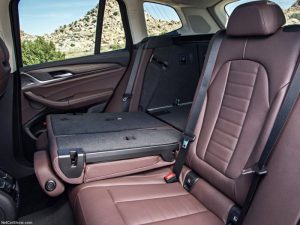
Base price for the X3 is $42,650 for the 3.0i -which comes with a 2.0 liter four cylinder engine and xDrive all-wheel-drive; the M40i (which comes with a 3.0 liter six) and xDrive AWD stickers for $54,500 to start.
The rear-wheel-drive Mercedes-Benz GLC300 – which also comes standard with 2.0 liter four cylinder engine – starts at $40,050 – exactly $600 less than the xDrive (AWD) equipped base trim X3.
$56,250 will buy you the AMG-uprated version of the GLC, the AMG GLC43. Like the M-enhanced version of the X3, it gets a turbocharged six and delivers extreme acceleration: zero to 60 in less than 5 seconds.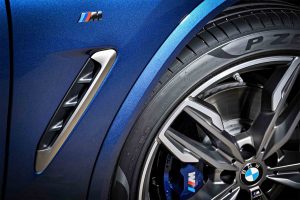
The GLC is also available with a turbocharged V8 – for even more extreme acceleration.
That’s something the X3 does not offer.
Not yet, at least.
I, too, have a dream . . .
WHAT’S NEW
It doesn’t look obviously new, but the 2018 X3 is all-new. It gets a wheels-up redesign after almost seven years of being more or less the same thing.
The 2018 is a little bit longer and wider than before, has a bit more head and legroom up front than the old model and – for the first time – has an LCD touchscreen. The old model had a screen, but touching it just left fingerprints on the screen.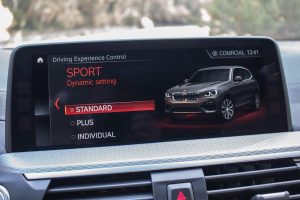
Both of the X3’s engines are stronger, too.
The standard four gains 8 hp (248 now vs. 240 last year) and the optional six gains 55 (355 now vs. 300 last year). This brings the X3’s guns up to caliber with the GLC’s optional 362 hp V6 and the Audi SQ5’s optional 354 hp V6).
One other change for 2018 is that AWD is standard now – with either engine. The formerly available rear-drive version of the X3 (the xDrive35) has been dropped.
And of course, no more diesel option.
Thank Uncle for that. His fatwas have made diesels too complex, too expensive – and not efficient enough – to justify the cost (and hassles, including having to add urea to a separate tank every other month) for most buyers, even in the luxury segment.
Both BMW and Mercedes have pulled their diesels from the U.S. market for just that reason.
WHAT’S GOOD
More power – and more capability – than before.
More headroom – by a lot – than all the others in this class.
More cargo room than most of the others in this class.
WHAT’S NOT SO GOOD
No more rear-drive version means no more burnouts.
No more diesel.
Almost a $12k bump in price to get the six.
Both of the X3’s engines return – the standard 2.0 liter turbocharged four cylinder and the optional 3.0 liter turbocharged in-line six.
They are both paired with an eight-speed automatic.
The four’s 248 hp is just enough hp to edge out the GLC’s standard 241 hp 2.0 liter four on the specifications sheet, but the BMW is noticeably quicker. It can get to 60 in 5.9 seconds vs. 6.3 seconds for the four cylinder GLC.
Surprising – in terms of the specifications sheet – the BMW with the four is also much quicker than the Cadillac XT5, which comes standard with a 3.6 liter – and 310 hp – V6. But the Cadillac – which is larger and heavier – can’t get to 60 any sooner than about 6.6 seconds.
It’s also thirsty – 18 city, 25 highway with the optional AWD system.
The four cylinder (and AWD-equipped) BMW is less so: 22 city, 29 highway.
Audi’s Q5 has the strongest four in the class. It’s also 2.0 liters, like the rest – but this four makes 273 hp. But the Audi isn’t quicker than the BMW. It is as quick. Zero to 60 in the same 5.9 seconds – and uses a little more gas: 23 city, 27 highway. The Audi is also built on a front wheel-drive layout, which has its pros – and its cons – which will be discussed in a minute.
The big news, X3-wise, is the optional six.
Which is still there, first of all (whew!) and much more powerful than last year. BMW has kicked it up to 355 hp and 369 ft.-lbs. of torque, all of it developed at 1,520 RPM. There is a 100-plus hp difference now between the standard-engined X3 and the X3 with this six, which accounts for the difference in quickness between the two. While the X3 2.0 is quicker than most V8 muscle cars of the ’60s and’70s, the X3 M40i is quicker than many supercars – and not of the ’60s and ’70s but a lot more recent than that.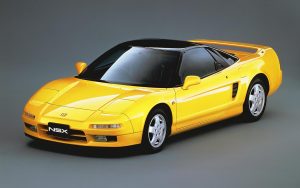
4.4 seconds is all it takes for this one to get to 60. That is substantially quicker than a 1990 Corvette (4.9 seconds) and the ’90 Acura NSX – which was a $90,000 exotic when it was new.
The X3 is an entry-luxury crossover SUV. It carries five people, not two. And can carry them to work on a snow day, too.
Its performance is startling – in a very good way.
It is also one other thing – class best.
The AMG amped-up version of the Benz GLC has more power – 362 hp and a stupendous 384 ft.-lbs. of torque at 2,500 RPM. But despite that – and despite both these two weighing about the same 4,200-plus lbs. – the Benz gets to 60 a bit less quickly: 4.7 seconds.
That is still almost exotic car quickness – in a crossover SUV.
But not quite as quick as the BMW.
And – for the record – much quicker than the V6 powered Audi SQ5, which is the hot rod version of the Q5. Despite its 354 hp, the SQ-ized Q is not much quicker than the regular Q. It gets to 60 in 5.1 seconds.
Which isn’t nearly as quick as either the BMW or the Benz.
And the Cadillac?
Forget about it! It’s a good thing it has a roomier back seat – because you’ll be spending more time back there. The fatty Caddy is more than two seconds slower to 60 than either of the two German uber crossovers.
The X3’s charm is that it drives very much like a car – and not just any car, but a sports car. This despite the four doors (five, if you count the hatch out back) and the 8 inches of ground clearance – which, along with the AWD – makes the X3 a sled dog in the event of snow.
And the main reason for this sports car-ness is the fact that it is built on the rear-drive layout mentioned up above, just like real sports cars always are. Its engine and transmission are not mounted sideways in the engine bay, but front to back – the weight thus more evenly distributed vs. the nose-heavy FWD layout.
Some of this nose-heavyness is compensated for in the front-driver by the addition of AWD, which adds both a rear axle and power delivered to the rear axle – which power transfers some of that weight rearward (and plants it via the rear wheels) during acceleration. But it’s not the ideal blueprint for optimal feel during acceleration – and balance during cornering.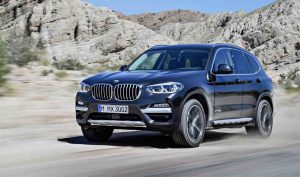
The rear-drive-based vehicle is rear-biased, meaning the default is for most of the engine’s output to be routed to the rear wheels, with some of the engine’s power fed back to the front wheels when (and if) the primary drive wheels – the rear wheels – begin to break traction.
This is optimal for both acceleration and cornering.
In a FWD-based car, it is exactly the reverse. The front wheels are the primary drive wheels and most of the time, most of the engine’s power is sent to them, with some of it sent to the rear wheels when the front wheels begin to break traction. But most of the time, most of the engine’s power goes to the front wheels.
In ordinary schlepp driving, this is actually an advantage. Being pulled rather than pushed – and having more weight over the wheels which pull the car. There is traction there. But in more-than-ordinary driving, the rear drive layout is always preferable. The X3 – and the GLC – are the SUVs for those who like to drive. Which is – alas – becoming something fewer and fewer people seem much interested in.
But if you are among the remnant, you will be very interested.
Most of the changes for 2018 require a tape measure to identify. This is good – in the sense of not fixing what ain’t broke. The styling – and stance – of the 2018 are only slightly different and not enough that you’d notice unless someone pointed out the tweaks here and there vs. last year.
The noticeable changes include more of the already generous headroom for the driver and front seat passenger the X3 has always had – 41.4 inches now, which is an almost unbelievable 3.6 inches more headroom up front than in the GLC Mercedes. (Weirdly, the Benz has more headroom for backseat passengers – 38.5 inches vs. 37.8 up front – but in either row, there is a lot less headspace in the duck-and-cover Mercedes than in the BMW.)
Another dimensional advantage the BMW has over the Benz is cargo room. There’s 28.7 cubic feet of capacity behind the back seats in the X3 – and a total of 62.7 with them folded. The GLC has 19.4 cubic feet behind its second row and 56.5 cubic feet if you fold the down.
If you need more room – for legs and cargo – the Cadillac XT5, which is also the largest vehicle of the bunch (189.5 inches long vs. 185.9 for the BMW, 183.6 for the Audi and 183.3 for the Mercedes) might suit you better. It has 30 cubic feet of capacity behind its second row and almost 40 inches of second legroom – significantly more than the BMW (36.4 inches) or the Mercedes (37.3 inches) or the Audi (37.8 inches).
But it’s a slug compared with all of them. And – remarkably – it still has much less headroom (38.4 inches up front; 36 in the second row) than the BMW and also slightly less total cargo capacity (60 cubic feet vs. 62.7 for the X3).
Get that great GM feeling!
The other obvious X3 change is the updated touchscreen. Like the GLC’s, it’s a floating, iPad-style touchscreen. The standard size is 6.5 inches but this can upsized to 10.3 inches (it’s bundled with the Premium and Executive packages, the latter of which also includes the gesture control touchless interface that debuted in the 7 Series sedan about a year ago).
You now have two – and potentially, three – ways to adjust the infotainment and related settings. You can (a) use the rotary knob to find what you want and then push to select. Or you can (b) simply touch the touchscreen. Or (c) you can wave your hand/twirl your finger – if you bought the Executive package and got the gesture control.
The display is rich-looking and the variety of stuff displayed is seemingly without end. This includes a real-time horsepower and torque “dyno” which shows you exactly how much of both the engine is making at any given moment.
BMW got a lot of flak over its auto stop/start system – which was one of the first such on the market. The stop/start cycles were as obvious as a fart in church. Someone came up with the the “paint shaker” honorific.
The new X3 also has auto stop/start, but the cycling is much less noticeable – to the degree that they are almost unnoticeable. I state this as someone who loathes the auto stop/start system in principle – the gas savings for the vehicle owner are negligible while the wear on the battery and probably other parts is not – and who in practice always shuts the system off.
But while driving the X3, I found myself leaving it on – chiefly because I did not notice it was on.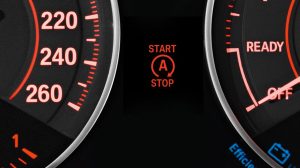
Similarly, the X3’s lane keep assist system does not assault you with steering wheel vibration; there is a light pulse through the wheel. It is much more civilized than the general practice. So also the very in-the-background speedometer needle red backlighting that comes on when you’re driving faster than the speed limit of whatever road you’re on (the car knows this via the GPS). In other cars, you get a more in-your-face hectoring via a digitized speed limit sign that turns an angry, finger-wagging red.
The only thing I didn’t like about the new X3 – and that’s just 17-year-old-me in a 50-something body – is that the M40i’s 355 horsepower translates to the road through all four wheels rather than just the two (rear) wheels.
But, much superior traction – including acceleration. The AWD X3 doesn’t waste power frying tires. It uses it to bullet forward like five door supercar it is.
Well, there is one other thing to carp about.
But this one isn’t BMW’s fault. The death song of diesel power in the U.S. is a crime. One wonders what the real agenda is. Not BMW’s – or Benz’s – or any of the other brands that have decided to withdraw the diesels they used to offer in vehicles like the X3. They tried. Lord, they tried.
Could it be that diesel-power is a practical and efficient and economical way to achieve very high mileage, without resorting to expensive hybrids and impractical electric drive?
I leave that one to you.
THE BOTTOM LINE
Every reason you had to like the previous X3 is still a great reason to buy the new X3. BMW has just given you more reasons to buy one.
. . .
Got a question about cars – or anything else? Click on the “ask Eric” link and send ’em in!
If you like what you’ve found here, please consider supporting EPautos.
We depend on you to keep the wheels turning!
Our donate button is here.
If you prefer not to use PayPal, our mailing address is:
EPautos
721 Hummingbird Lane SE
Copper Hill, VA 24079
PS: EPautos magnets – they’re back! are free to those who send in $20 or more to support the site. Also, the eBook – free! – is available. Click here. Just enter you email in the box on the top of the main page and we’ll email you a copy instantly!


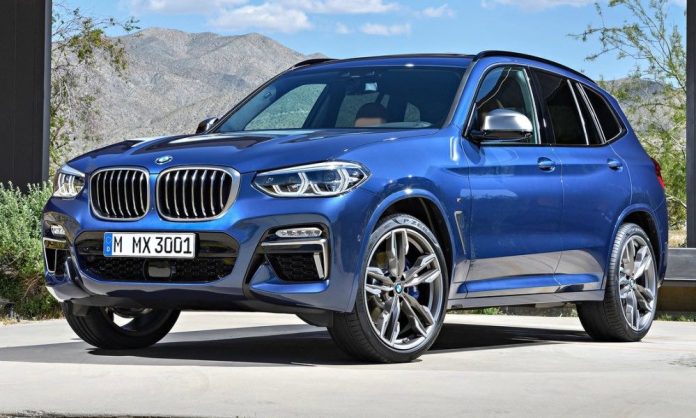

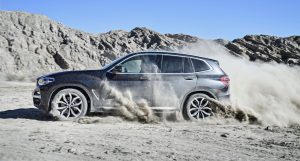
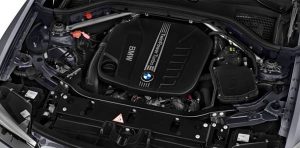


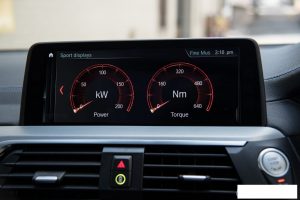

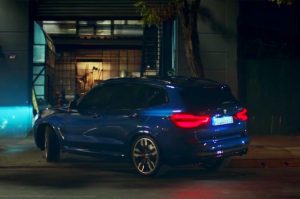








Although the X3, and X1 for that matter, no longer offer the diesel, BMW hasn’t completely dropped diesel from the lineup. The 3 series and X5 are still available with the diesels.
Hi Late,
Yes… for now. I expect them to retire from the field, too. The cost-benefit (for them and for buyers) is becoming not much and so not worth the effort. The regs have made diesels very expensive, both to buy and to fuel (and to maintain) which badly undercuts the main reason for buying them. And getting them through the emissions gantlet – the latest “bin” and “tier” – is only going to make this more problem more acute.
There needs to be a revolution – or at least, a nationwide Up Yours! to the EPA and the federal government….
It’s a very effective way to ban something without actually having to take the heat for outright banning of something. Just make it harder and harder to make a “legal” product over time until it gets to the point it no longer pencils out, no matter what you do. The de facto ban.
That’s why we don’t have large full sized cars and station wagons, they were never actually banned, but regulated away. The same is under way for diesels now. Next up will be new vehicles of any type costing less the 30k. (yup, there will NEVER be an electric under 25k)
Having the E83 version of this car, have to say its brilliant when it comes to handling and road grip. When I first got my UK license, needed a car in the ultra safe class as I was being scalped by the insurance mafia. So I got this with the 2.0D engine and a manual gear box, in the absolute base spec. Needed a bit of space, but wanted something fun to drive. And thats exactly what it is. It really drives like a sports car, and makes other compact SUVs just feel dull. Liked it so much, had it for over 4 years, just dont know what else to get- like you say, if it aint broke….. (Though as the car is now on its 11th year, starting to worry about big repair bills, and little bits here and there are starting to fall apart)…
Saw you had the Jag F Pace in some months back, what do you think about that compared to this? Not driven it but thats like the only thing that is (somewhat) motivating me to change.
And there’s just something about a high output straight six. My fave configuration.
If I didn’t want or need substantial cargo capacity, or almost any offload capability, this would be the CUV for me.
In every way, this thing fits my definition of a perfect daily driver.